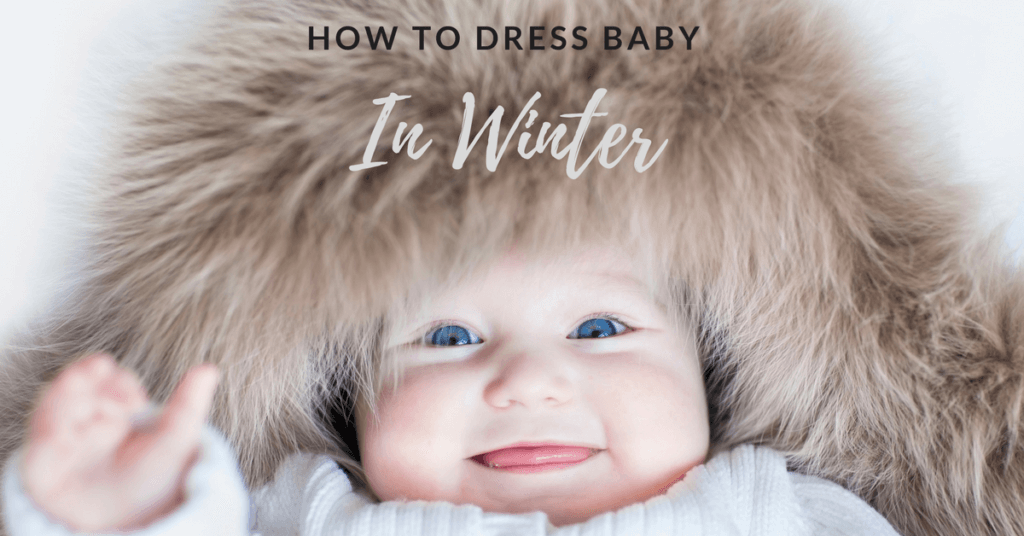You’ve had a winter baby. Congratulations. Now, you want to figure out how to dress baby in winter so that you can get out, and show off that baby. Right?
As eager as you might be to get out, don’t expose your baby to extreme cold for long periods.
Fresh air is important for your baby, even when the weather is chilly. However, if you feel any uncertainty, check with your pediatrician first. Most pediatricians say that as long as your baby was born full term, is at least 3 weeks old, and weighs 12 pounds, it’s okay to take a 15 to 30-minute walk outside in the winter. Temperatures of 25°F or higher are fine but use your best judgement. If your baby was preterm or has a medical condition, consult your pediatrician before you venture out.
So… going out is fine but do keep in mind that babies lose heat faster than you would. As such, when you’re buying winter clothes for baby, it’s important to keep the following tips in mind.
No products found.
Baby Winter Clothes: The Basics
Layers
Experts – and by experts I mean seasoned moms and pediatricians – agree that layers are the way to go when choosing winter clothes for your baby.Layers help trap the heat in, making things warm and cozy during those cold winter outings. Layers keep us warmer than one thick, chunky sweater would. Choose onesies and easy to remove tops.
So, how to layer clothes for winter?
Dress your baby as you would dress yourself, with one extra layer when your baby is small. If you’re wearing three layers, baby should wear three layers plus one extra layer. For example, if you’re wearing a shirt, a sweater and a jacket – dress baby the same PLUS a onesie.
This advice applies when you’re inside or outside.
Use Onesies

Onesies are excellent and should surely be part of your layering. The reason why they come highly recommended and are also so extremely popular, is because:
- They’re really effective in keeping baby warm because most of them are made of cotton. Cotton is the most common fabric in infant clothes. Cotton is also soft and absorbent and gentle on a baby’s skin.
- Onesies are snapped under baby’s diaper, so it won’t ride up on baby’s chest, potentially exposing skin.
Get Long Baby Socks That Stay On
Our feet are ideally suited for helping us keep our body temperatures stable. Make sure baby is wearing socks or booties that do not come off easily. This might be a bit of a challenge because lots of babies like to kick off their socks. Longer baby socks are a great solution.
Baby Winter Clothes: Inside
Avoid Drafts
When inside, keep your baby away from drafts. Actively look for drafts so that you know where they are, and then either avoid them or cover them up.
Check for drafts at open doors, open windows, or in front or above a hot or cold air vent.
No products found.
Baby Bodysuits
Baby footed onesies are similar to onesies but they cover the entire body. They’re perfect because there are no concerns about any skin getting exposed.
Use Baby Leggings
One essential part of layering is the leggings. Sure, not everyone loves leggings but they are great for winter because they’re able to keep your baby warm. Pants are good but they tend to ride up on baby’s legs, potentially exposing their little legs to the cold. That won’t happen if you have fitted leggings.
Leggings are good for boys and girls. They can be worn under a skirt/ dress, or pants for boys. They can easily be pulled off if your baby gets too hot.
No products found.
Baby Winter Clothes: Outside
What you get will depend entirely on the climate you live in. If you live in a really cold climate, you would have to get everything, to ensure your baby is protected from the cold. Use your best judgement and decide from there.
Very importantly:
Except for baby’s face, try to cover as much skin as possible. Exposed skin means opportunities for the cold to creep in.
You want baby warm, but not overheated. This advice applies for inside, outside or sleeping.
Hats, Mittens & Socks
Babies lose heat very quickly through their head and feet. When you’re outside, get those covered first because the head and the feet are the quickest way to warm up.
Make sure baby has a hat that fits their head snugly, but not too tight. Hats that have a fleece lining on the inside are great, especially if they cover your child’s ears. Covered ears are great because it reduces the risk of ear infections. If you’re worried about your little one trying to take off his or her hat, use the kind of winter hat that you can tie under their little chins.
As suggested above, use long baby socks to reduce the risk of baby kicking them off.
Do not forget about baby’s hands because no one likes cold hands – that includes your baby. Frostbite comes quickly to tiny fingers and toes. Get baby mittens when you’re getting winter baby clothes.
Legwarmers
Legwarmers fit snugly and can be wrapped around baby’s calf and heel to ensure that baby is warm. They’re very popular in some parts of the country.
If baby’s is wearing pants, they tend to ride up on baby’s legs, exposing skin. This is where legwarmers come in very handy. (Wearing leggings instead of pants will also keep baby’s legs covered).
No products found.
Winter Covers
When you’re dressing up baby, having all the layers, hats, gloves and shoes might not be enough when you’re venturing out. This is why many parents get winter covers.
There are all kinds of winter covers. Some parents find that a baby winter jacket or a baby winter coat is enough for older babies.
Infants winter clothing is a little different, though. Infants are a little more compact and this is why there are special winter covers for them. These include car seat cover, stroller covers, baby carrier covers, etc.
Car seat covers like this one on the left is really popular for infants.
No products found.
They can cover your baby completely, but still leave ample breathing air because the cover is over baby’s face, not on baby’s face.
When you get one of these car seat covers, it’s fairly easy to get baby ready to go outside. You put on your layers, put baby in the car seat, and you’re done.
The negative about these covers, is that they’re expensive and you don’t use them too long. This obviously depends on a few factors like where you live, and the size of your baby. If you live in a climate where it is cold for most of the year, then a car seat cover like this is an excellent investment.
Many babies stay in an infant car seat for up to two years. If that’s the case with your baby, it would mean that you’ve successfully used your car seat cover, for two seasons.
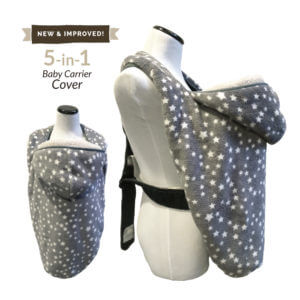
Another winter cover is the Kurumi Ket – here on the right.
It is a double fleece that you can use as a stroller cover, baby carrier cover, a nursing cover, a baby blanket/ stroller blanket, and a toddler poncho.
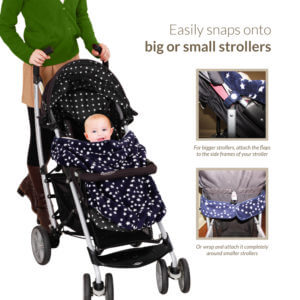
If you are using it as a baby carrier cover, you’ll be able to cover a baby’s entire body from head to toe. It fits onto all baby carriers, and babywearers can use it for front carries or piggyback carries.
It’s great as a stroller blanket and stroller winter covers too because it can snap onto your stroller. So, even if baby kicks it off, it will stay on.
The Kurumi Ket has a drawstring at the bottom, so you can create a fitted, snugly pocket for your baby’s feet. This is great because it prevents drafts from making its way in.
Like the baby seat cover above, it’s also quite expensive at $49. If you live in a very cold climate where it’s cold much of the year, this is an excellent investment. What makes it a little different from the baby seat cover, is that:
+ you will definitely use it for more than one season, despite how fast your baby grows. It would be a worthwhile investment;
+ you can use the Kurumi Ket for many purposes, not just one. So even if you’re done using it as a baby carrier cover or a nursing cover, you can continue using it as a stroller blanket or a toddler poncho, or just a blanket.
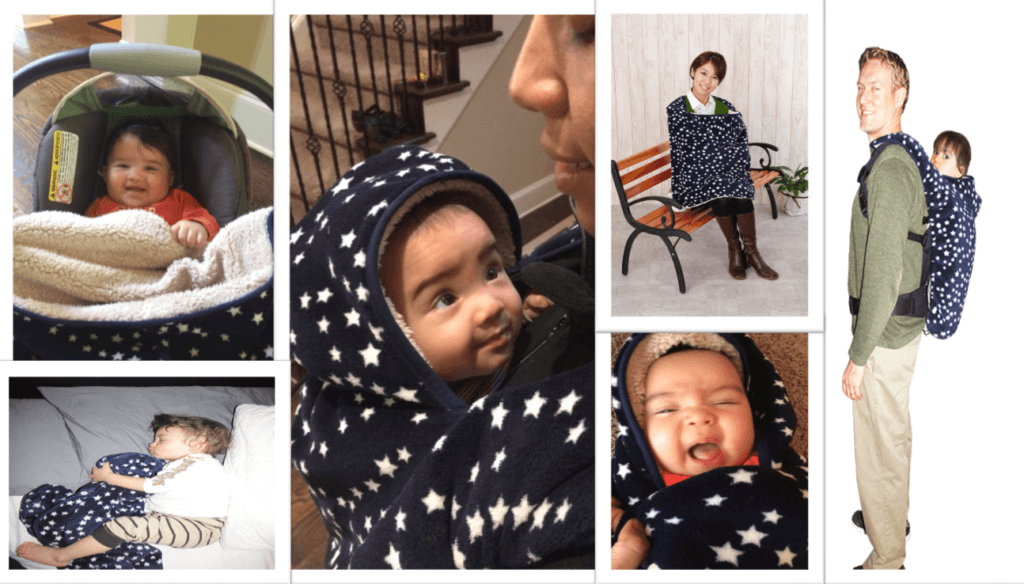
Hot Packs
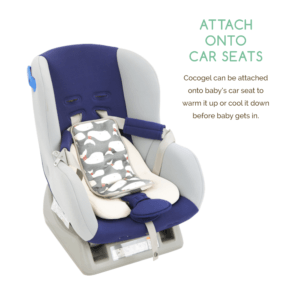
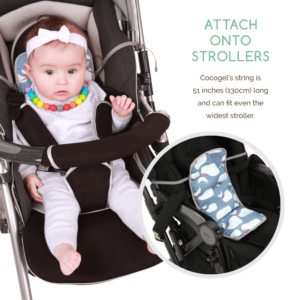
Most of us know what a hot water bottle is, right?
If you don’t – it’s a rubber sack that you fill with hot water. It helps to keep you warm as long as the water stays hot.
Despite hot water bottles being considered old-fashioned by many, it’s still very widely used and many moms use it for their babies, especially at night.
Technology has stepped things up a bit and now there are hot packs for babies. It’s like hot water bottles, on steroids.
No longer do you need to worry about filling anything with hot water – you can simply pop it in the microwave for a minute, and you’re done.
If you’re planning on putting baby into a cold car, this is a great way to warm up the seat before baby gets in.
What’s great about this car seat warmer, is that it’s not just a warmer. In the summer, you can use it as a cooler too, by simply popping it in the freezer.
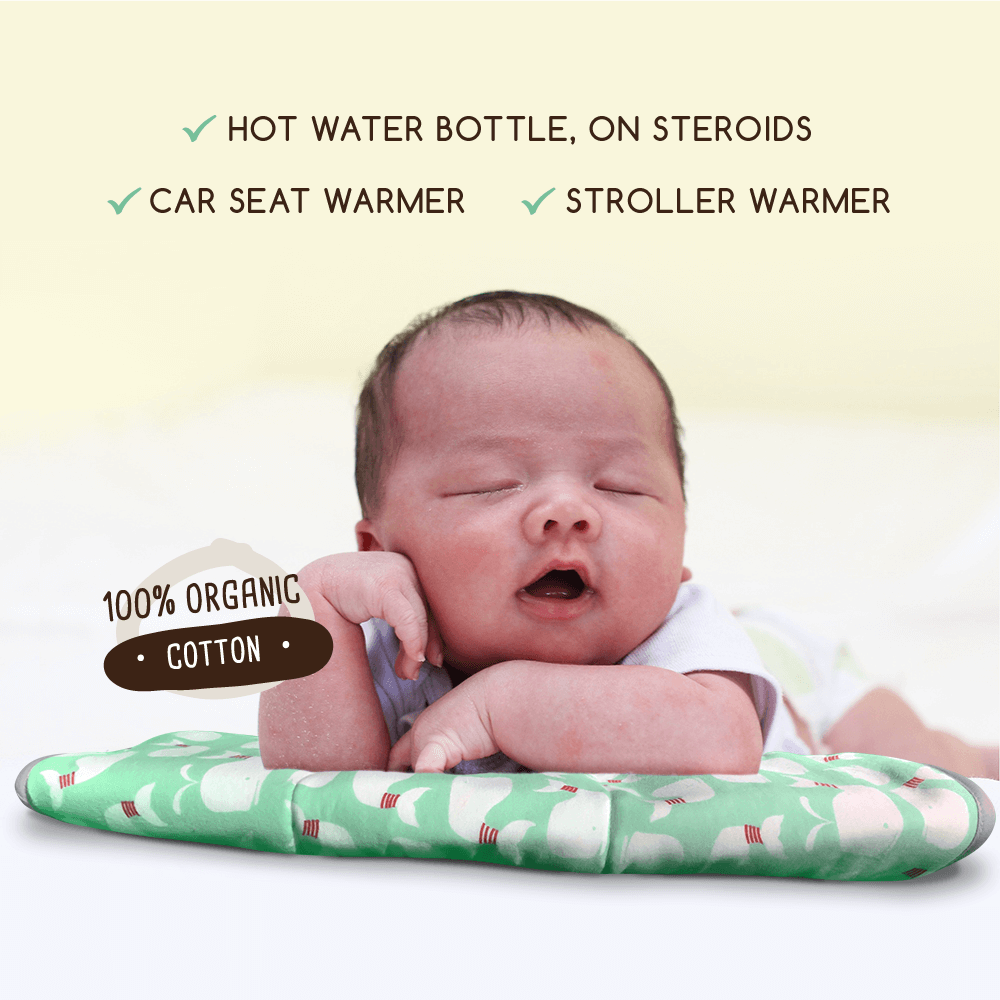
But There’s Even More to Consider When Dressing Babies for Winter
+ Keeping your baby safe from the chilly weather isn’t limited to clothing. If you’ll be taking your baby on rides with you in the car, it helps to put the car heater on for a few minutes in advance, so the car won’t be too cold when you get in.
+ It is also a good idea to limit the overall time you and your baby are out in the cold. If you’re walking from place to place with your baby in the carrier or a stroller, it’s a good practice to make a stop into a heated building every once in a while to warm up for a bit before going back outside.
+ If you are living in an icy environment, you will definitely want to wear shoes with grippy tracks to keep you from slipping on an icy pavement. If you go down, baby goes down too – if you’re babywearing.
+ If you are babywearing, you don’t want to put on too many layers for baby. Why? Because your baby will be huddled close to you, sharing your body heat. Follow the advice offered and keep baby’s skin covered. But, use your best judgement. You may need to take off a layer if your baby gets too hot. You can always put the layer back on when taking the baby out of the baby carrier.
+ Avoid smothering your child in your jacket or blanket. Make sure your baby’s face is visible and that he or she is able to breathe comfortably at all times. If you’re babywearing, your baby should be in a safe position in the carrier – high enough for you to kiss his or her forehead, and not with his or her face smothered in your chest.
+ Never Cover Your Baby’s Face. Some of us live in sub-zero temperatures. In such cold climates, you may want to protect your baby from the extreme cold by covering their face. Don’t do this. By covering his/her face, you could decrease their oxygen and thereby risk suffocation.You should always be able to see your baby’s face. If you can see baby’s face, you can quickly gauge how he/she is doing. You’d be able to tell if they are in distress, overheated or possibly cold.
Happy Winter

